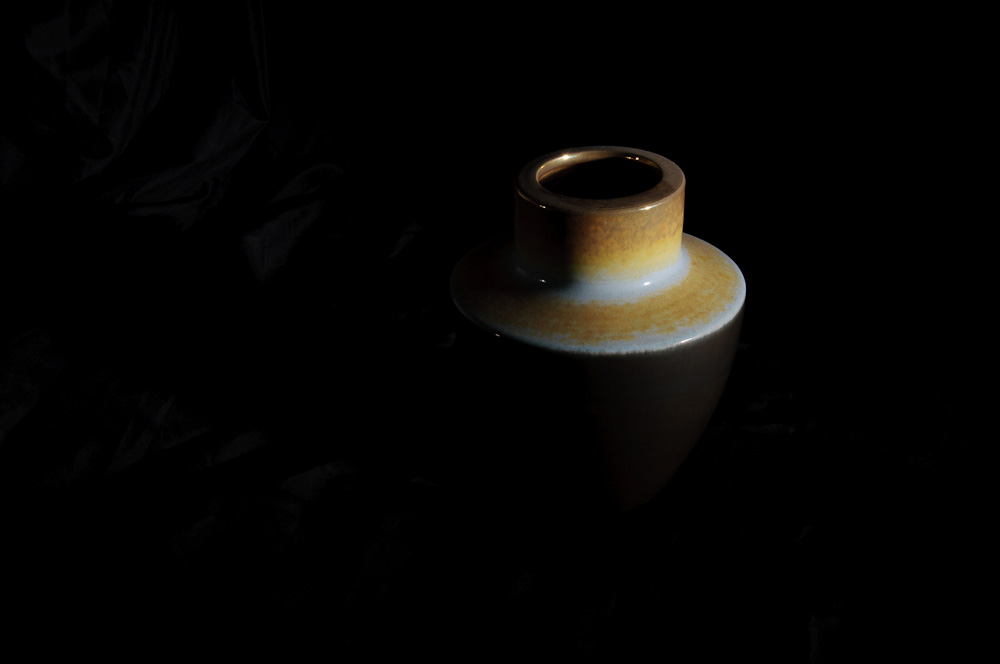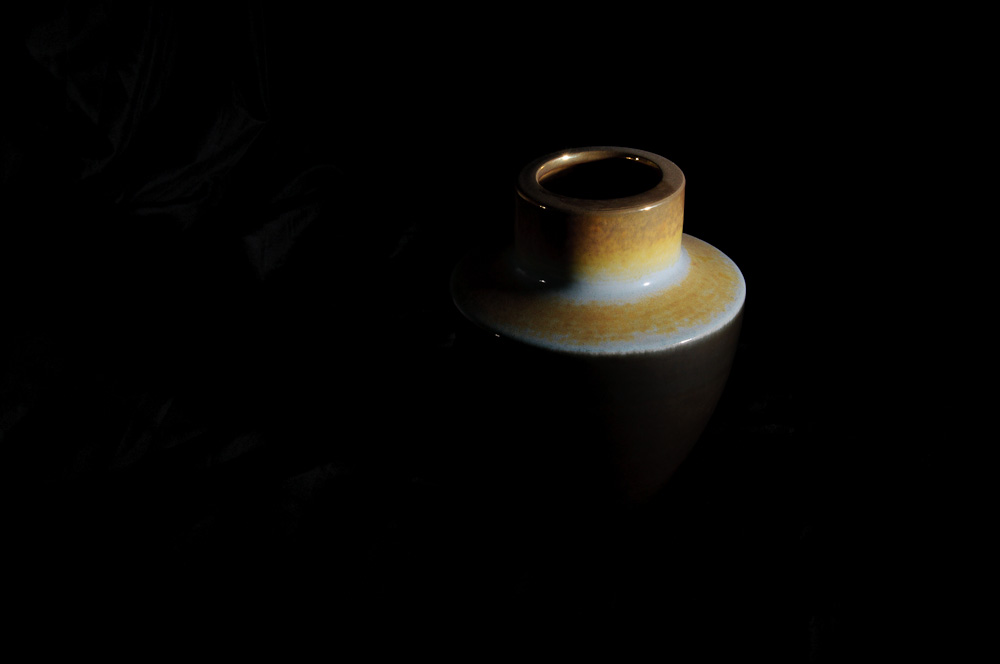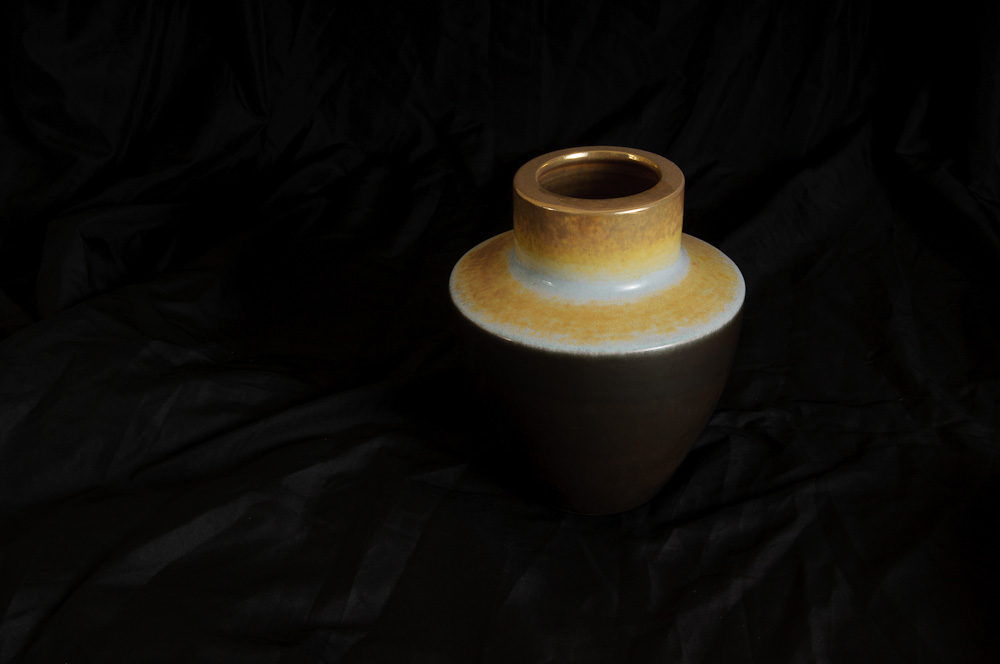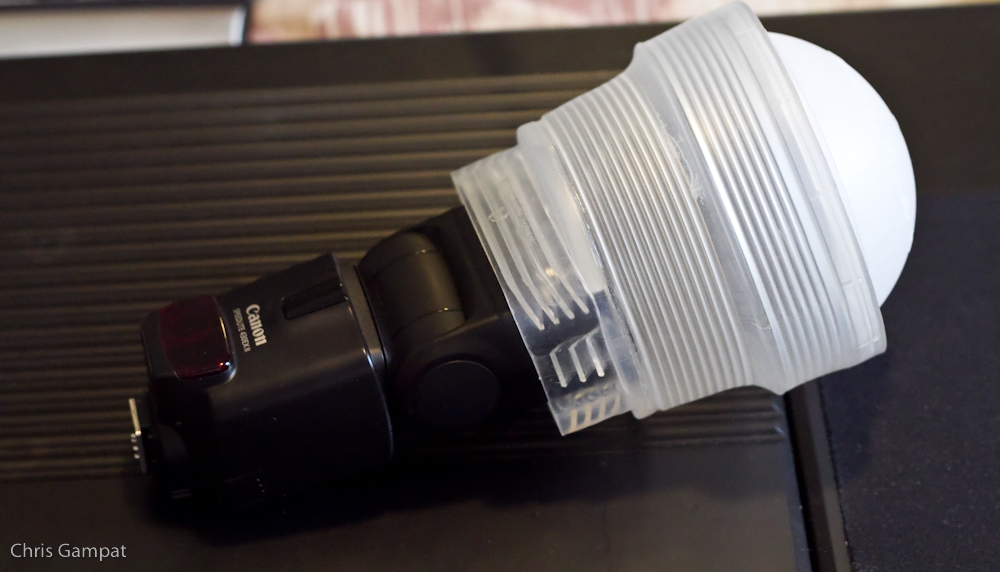
The belief that more or less light will change the qualities of your photo is a common misconception. Here I will show you through 3 simple photos that this is not true.
The first photo was taken with a small light source from the side, set to 300Ws. Specifically it’s a Speedotron Brown line strobe with a 7″ reflector and a 10º grid on it to further limit the family of angles. My light meter tells me that to expose this properly I should set my camera to ISO 200, and f/22 at 1/250s. The shadows are too strong for me here though, so much so that you can’t really see the detail or shape of the vase. So let’s increase the light, right? Ok, we’ll bump the power to 600Ws…

Wait, this photo looks the same. So what changed? Well since I increased the power (intensity) of the light, I had to change one of the three values in the triangle of light. Since I’m working with strobes, the shutter speed and ISO stay where they are so the only value that changes is the aperture – to f/25. You won’t really see a difference between f/22 and f/25, but greater changes to the intensity of light can be used creatively, for example to soften the depth of field or capture motion.
For our third photo we’ll go back to the prior setting of 300Ws, but this time we’ll change the size of the light source by putting a Photoflex X-Large Softbox on the strobe. Keeping it in the same position and with the same intensity, the camera settings are the same as they were for the first photo. However by putting the softbox on it we’re increasing the family of angles with which the light hits the vase, so we have less and softer shadows. We could further change this by moving the light, adding reflectors or making other changes but I wanted to keep as many things consistent as possible.

One of the most important things you can do to improve your photography is to understand light theory better, and the most important aspect of that is the separation of intensity and quality. Light theory wasn’t invented for photography or by camera makers, it is a law of nature and acts exactly the same way outdoors with natural light as it does in the studio – only our means of controlling it change.
To learn more about light theory and how we can use it as a tool in photography, pick up a copy of Light: Science and Magic: An Introduction to Photographic Lighting. I learned virtually everything I know about light from this book.
You can also take a look at Chris’s posting on flashes and batteries where he shows progressive results in changing exposure settings.
Please Support The Phoblographer
We love to bring you guys the latest and greatest news and gear related stuff. However, we can’t keep doing that unless we have your continued support. If you would like to purchase any of the items mentioned, please do so by clicking our links first and then purchasing the items as we then get a small portion of the sale to help run the website.


